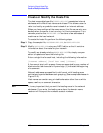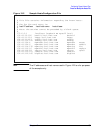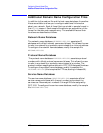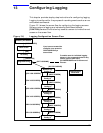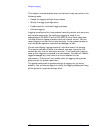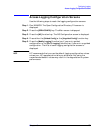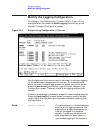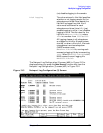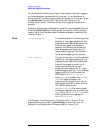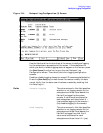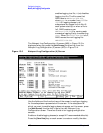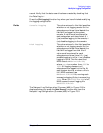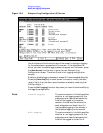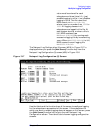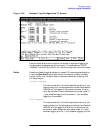
176 Chapter13
Configuring Logging
Modify the Logging Configuration
Use the fields and the function keys of the screen to configure logging
for the subsystems represented on the screen. If the subsystem for
which you want to enable logging does not appear on this screen, press
the
[Next Screen] function key to go to the next Netxport Log
Configuration screen. There are a total of six logging configuration
screens.
Enable or disable logging classes (or accept HP-recommended defaults).
Press the
[Save Data] key on each screen to create or modify the data
record. Verify that the data record has been created by checking that
the Data flag is Y.
Fields Console Logging The value entered in this field specifies
whether or not logging events for the
subsystem and class listed beside the
field will be logged to the system
console. A value must be entered for
each subsystem and class listed. A Y
(yes) enables logging to the console, N
(no) disables logging to the console.
Disk Logging The value entered in this field specifies
whether or not logging events for the
subsystem and class listed beside the
field will be logged to a disk file. A
value must be entered for each
subsystem and class listed. A Y (yes)
enables logging to a file, N (no) disables
logging to a file. The file name that
NMS uses is NMLG
nnnn
.PUB.SYS,
where
nnnn
is a number from
0000
to
9999
. All logging classes in all
subsystems are logged to this file. At
each system startup, or when a file is
full, NMS creates a new
NMLG
nnnn
.PUB.SYS file, naming each
successive logging file by incrementing
nnnn
. When NMLG
9999
.PUB.SYS is full,
NMS names the next logging file
NMLG
0000
.PUB.SYS.
The Netxport Log Configuration (3) screen (#70) in Figure 13-4 is
displayed when you press the [Next Screen] function key from the
Netxport Log Configuration (2) screen (#60) in Figure 13-3.



